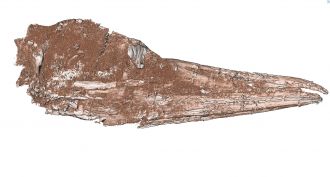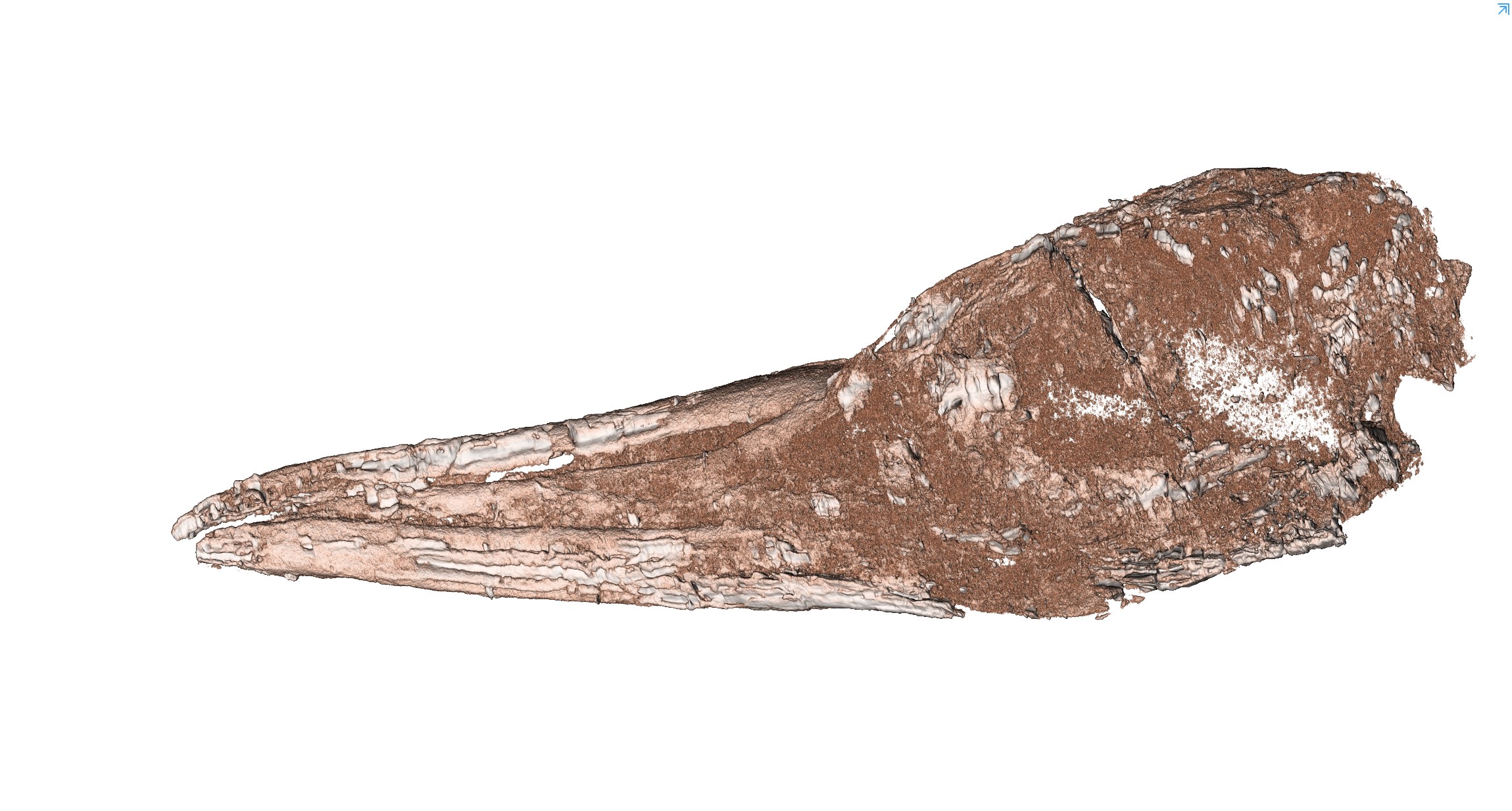Media release
From:
A team of palaeontologists from the University of Canterbury has discovered a remarkably intact fossil of one of the earliest ancestors of a group of birds now restricted to the tropics. Tropicbirds, now represented by only three living species, have a long fossil record spanning at least 62.5 million years, with the oldest described species being Clymenoptilon novaezealandicum, or Zealandian Tropicbird.
The specimen, boasting a nearly complete skull, wing, and pelvis among other elements, was collected from the Waipara Greensand, North Canterbury, and is estimated to be around 62 million years old. It is the second tropicbird found in the Waipara Greensand (the first one was a smaller, unnamed specimen described in 2016).
The Zealandian Tropicbird has features that distinguish it from all other known fossil tropicbirds and suggest it was, evolutionarily speaking, an ancestral form of tropicbird. Features of the skull, wing, and pelvis suggest it had different feeding/foraging habits from living and other extinct tropicbirds, but because the specimen has no legs, it is not possible to get a complete picture of its mode of life.
The age (ca. 62 million years) and ancestral characteristics of this newly described species suggest that tropicbirds may have originated in the Southern Hemisphere – up until now all other fossil species had been known from the Northern Hemisphere only. The presence of a second, smaller, species of tropicbird in the Waipara Greensand, together with that of a primitive bony-toothed bird, and multiple species of penguin, indicate that Zealandian shores were a hub for seabird diversification following the mass extinction event that famously caused the extinction of the dinosaurs 66 million years ago.
Leigh Love, who first only found its skull but fortunately, a month later, also the rest of the specimen, discovered the Zealandian Tropicbird. His then 10-year-old son David helped him retrieve it.
“He was 10yrs old at the time and very keen to join me on some of my fossil hunting trips into the Waipara," said Love.
"On this occasion when we found the bones, he said he was both surprised and amazed that we had found a flying bird. For me it has been great watching a child's face light up as a result of finding rare creatures preserved from our distant past."
Expert Reaction
These comments have been collated by the Science Media Centre to provide a variety of expert perspectives on this issue. Feel free to use these quotes in your stories. Views expressed are the personal opinions of the experts named. They do not represent the views of the SMC or any other organisation unless specifically stated.
Vanesa de Pietri, Research Associate, University of Canterbuty
The extinction of dinosaurs and other land and aquatic vertebrates 66 million years ago, left vacant a vast array of habitats that birds were able to conquer. Through all these bird fossils we are finding in the Waipara Greensand, many as old as 62.5 million years old, we know that Zealandian shores played a key role in the early evolutionary history of many seabirds. Worldwide, the fossil record of birds this age is poor, which makes these Canterbury finds so significant in understanding what was happening with birds during the first 5 million years following the extinction of the dinosaurs.
Paul Scofield, Senior Curator Natural History, Canterbury Museum:
The Waipara Greensand continues to produce remarkable fossils from the early stages of the
evolution of modern birds. This latest find demonstrates that groups of birds once thought to have evolved in the Northern Hemisphere probably evolved in the seas around Zealandia
“The nearest relatives of our new species are found in the deserts of Morocco, demonstrating that tropicbirds were a widespread group between 60 and 40 million years ago.
Gerald Mayr, Senckenberg Research Institute and Natural History Museum Frankfurt, Germany:
This is another spectacular specimen from a world-class fossil site in New Zealand, which sheds new light on the evolution of an iconic bird group.
Multimedia












 New Zealand
New Zealand



